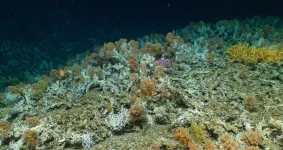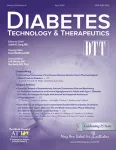(Press-News.org) UCF Researchers Create Digital Map of Sympathetic Nervous System
A team of UCF College of Medicine researchers has created a digital topographical map of the cardiac sympathetic neural network, the region that controls the body’s heart rate and its “fight-or-flight” response. They hope this map will eventually serve as a guide to treat cardiovascular conditions using bioelectronic devices.
The study, led by Dr. Zixi Jack Cheng, a neuro-cardiovascular scientist, was published in the Scientific Reports journal and was the project of an interdisciplinary team of researchers from UCF along with several other institutions as well as industry partners MBF Bioscience and SPARC Data and Resource Center. The project has been supported by the NIH Common Fund’s Stimulating Peripheral Activity to Relieve Conditions (SPARC) program, and funding from National Institute on Neural Disorders and Stroke and National Heart, Lung and Blood Institute.
“This mapping goes beyond what you can find in a textbook”, Dr. Cheng said. “This is a digitized brain-heart atlas that will be interactive. We hope it will serve as a guide not only for scientists and physicians, but also for students as they learn the neuroanatomy of the heart.”
The map may serve as a guide for treatments such as neuromodulation therapy – electronically stimulating nerves to treat cardiovascular conditions.
Dr. Cheng’s team and his SPARC collaborators previously created a comprehensive 3D map of a rodent heart’s intrinsic nervous system. The system, known as the “little heart brain,” contains thousands of neurons around the heart that regulate heartbeat and blood circulation. Their latest project extended that study and mapped topographical network of the nerves in the sympathetic nervous system and its connection to the heart. The team hopes the advanced blueprint will help scientists and physicians to study the brain-heart connection and navigate more precise control of different heart regions including those that control the heartbeat.
The sympathetic nervous system plays a pivotal role in regulating cardiac functions through an intricate network of nerves. It can help the body respond to dangerous or stressful situations, by speeding up the body’s heart rate to deliver more blood to areas that need more oxygen. The system also controls the heart rate, blood pressure, digestion and other vital functions.
To create the map, the team used a combination of state-of-the-art techniques to image, trace, digitize and quantitatively map the distribution of the sympathetic nervous system including the heart’s whole atria and ventricles.
“The groundbreaking part of this project is the precision at which the mapping is completed at the microscopic level which allows us to see the single cells and single nerve axons,” said Dr. Cheng. This is the first time that scientists will see the whole organ at such an intricate level.”
Dr. Yuanyuan Zhang, the postdoctoral fellow in Dr. Cheng’s lab, explained that this map will help researchers further test the functional role of a specific of nerve by activating or deactivating it and observing its impact on the body. He said the mapping can also serve as a guide for treatments such as neuromodulation therapy – electronically stimulating nerves to treat cardiovascular conditions such as hypertension, sleep apnea and heart failure.
“Utilizing our map as a sympathetic-cardiac atlas opens the door for innovative therapies for several cardiovascular diseases, nerve-related disorders and avoids side effects associated with many pharmaceuticals,” added Ariege Bizanti, a Ph.D. candidate in Dr. Cheng’s lab.
Heart disease is the leading cause of death for men and women in the United States, accounting for 697,000 deaths in 2020 according to statistics from the Centers for Disease Control. One person dies every 34 seconds in the United States from cardiovascular disease.
“The cardiac-sympathetic nerve system is very complex and remains poorly understood,” said Dr. Jin Chen, another UCF collaborator on the project. “So having this detailed mapping in the heart could give us important insights into the architecture of cardiac-sympathetic nerve and provide the foundation for future functional and molecular studies of sympathetic control of the heart.”
BY CHRISTIN SENIOR
END
UCF researchers create digital map of sympathetic nervous system
They hope this map will eventually serve as a guide to treat cardiovascular conditions using bioelectronic devices
2023-04-17
ELSE PRESS RELEASES FROM THIS DATE:
UCF scientist publishes book on emergence of new pathogens
2023-04-17
Climate change may be linked to an increase in the emergence of new pandemics, according to a new book published by an internationally recognized College of Medicine microbiologist.
Dr. Salvador Almagro-Moreno has teamed with fellow molecular biologist Dr. Stefan Pukatzki of City University New York – CUNY, to author the book titled Vibro spp. Infections, recently published by Springer Nature and includes the latest scientific research articles in this field from experts worldwide.
The book examines the factors associated with ...
Prime editing shows proof of concept for treating sickle cell disease
2023-04-17
(MEMPHIS, Tenn. – April 17, 2023) Sickle cell disease (SCD) is a serious blood disorder affecting millions of people, primarily those of African descent. A mutation in the gene that encodes a subunit of the oxygen-carrying molecule, hemoglobin, causes the disease. Scientists at St. Jude Children’s Research Hospital and the Broad Institute of MIT and Harvard showed a precise genome editing approach, prime editing, can change mutated hemoglobin genes back to their normal form in SCD patient cells, which restores ...
JNM publishes appropriate use criteria for lymphoscintigraphy in sentinel node mapping and lymphedema/lipedema
2023-04-17
Reston, VA—The Society of Nuclear Medicine and Molecular Imaging (SNMMI) and 10 other professional societies have issued new appropriate use criteria (AUC) for lymphoscintigraphy in sentinel node mapping and lymphedema/lipedema. The criteria, summarized in the April issue of The Journal of Nuclear Medicine (JNM), include a list of relevant clinical scenarios, a systematic review of evidence in the literature, and a systematic analysis of available evidence, followed by grading each of the clinical scenarios.
Sentinel lymph nodes ...
Father of the photonic bandgap to speak at Utah State University
2023-04-17
Renowned physicist, engineer and entrepreneur Eli Yablonovitch will visit Utah State University on April 25 for two lectures about his work in the electrical and computer engineering field.
Yablonovitch, who is currently a professor emeritus at the University of California Berkeley, will present lectures on controlling carbon intake as a solution to climate change and on physics and optimization in the engineering world. The lectures will take place on April 25, at 1 pm and 3 pm respectively. An RSVP form can be found on this webpage. All are encouraged to attend.
“Having Dr. Yablonovitch travel to speak to us is a great honor and a great opportunity for us ...
Scientists discover pristine deep-sea coral reefs in the Galápagos Marine Reserve
2023-04-17
17 April 2023 - Galápagos, Ecuador – Scientists have discovered extensive, ancient deep-sea coral reefs within the Galápagos Marine Reserve (GMR) – the first of their kind ever to be documented inside the marine protected area (MPA) since it was established in 1998. The first reef observed was found at 400-600m (1,310-1,970 feet) depth at the summit of a previously unmapped seamount in the central part of the archipelago and supports a breathtaking mix of deep marine life.
Cresting the ridge of a submerged volcano, and stretching over several kilometers, the impressive reef structure was first recorded by Dr. Michelle ...
New discovery stops bacterial virus contamination
2023-04-17
A new discovery by researchers at the University of Warwick could help stop bacteria being contaminated with viruses, reducing disruption and decreasing costs in industry and research.
Bacteria are routinely used in biological and biomedical research. They are crucial in food production and emerging industrial biotechnologies, where bacterial ‘factories’ can be used to produce new materials, medicines and chemicals. Industrial biotechnology uses microorganisms as alternatives to traditional ...
A meta-analysis of hybrid-closed loop control-IQ technology
2023-04-17
A new study evaluated the effect of hybrid-closed loop Control-IQ technology in the pooled data from three randomized controlled trials, comparing Control-IQ to a control group using continuous glucose monitoring in people with type 1 diabetes. The study, which examined subgroup based on baseline characteristics such as race/ethnicity, socio-economic status, pre-study insulin delivery modality, and baseline glycemic control, is published in the peer-reviewed journal Diabetes Technology & Therapeutics (DTT). Click here to read the article now.
Roy W. Beck, MD, PhD, from the JAEB ...
Leaps in artificial blood research aim to improve product safety, efficacy
2023-04-17
COLUMBUS, Ohio – Researchers have made huge strides in ensuring that red blood cell substitutes – or artificial blood – are able to work safely and effectively when transfused into the bloodstream.
The key is to make the artificial blood molecules big enough so they don’t leak from blood vessels into tissue and cause dangerous cardiovascular side effects, notes a new study led by researchers from The Ohio State University.
Although blood loss is typically treated by transfusing units of donated blood, in cases where transfusions aren’t readily ...
Ye receives funding for collaborative research: Ri: Small: Motion Field Understanding for Enhanced Long-Range Imaging
2023-04-17
Jinwei Ye, Assistant Professor, Computer Science, received funding from the National Science Foundation for the project: "Collaborative Research: RI: Small: Motion Field Understanding for Enhanced Long-Range Imaging."
Ye is collaborating with Nianyi Li, Assistant Professor of Computer Science at Clemson University, and Suren Jayasuriya, Assistant Professor, Arts Media and Engineering, and Assistant Professor, School of Electrical, Energy and Computer Engineering, at Arizona State University.
As ...
VA, NIH launch study of Gulf War Illness
2023-04-17
The Department of Veterans Affairs (VA) and National Institutes of Health have launched a study to gain a better understanding of the chronic symptoms of Gulf War Illness. The disease affects multiple systems in the body and includes chronic symptoms such as fatigue, headache, memory and cognitive difficulties, joint and muscle pain, poor sleep, and problems with gastrointestinal and respiratory function. It affects about a third of the nearly 700,000 men and women who served in the Persian Gulf during operations Desert Shield and Desert Storm.
“This is an important collaboration that we hope will lead to many answers to those ...
LAST 30 PRESS RELEASES:
Norbert Holtkamp appointed director of Fermi National Accelerator Laboratory
New agentic AI platform accelerates advanced optics design
Biologists discover neurons use physical signals — not electricity — to stabilize communication
Researchers discover that a hormone can access the brain by hitchhiking
University of Oklahoma researcher awarded funding to pursue AI-powered material design
Exploring how the visual system recovers following injury
Support for parents with infants at pediatric check-ups leads to better reading and math skills in elementary school
Kids’ behavioral health is a growing share of family health costs
Day & night: Cancer disrupts the brain’s natural rhythm
COVID-19 vaccination significantly reduces risk to pregnant women and baby
The role of vaccination in maternal and perinatal outcomes associated with COVID-19 in pregnancy
Mayo Clinic smartwatch system helps parents shorten and defuse children's severe tantrums early
Behavioral health spending spikes to 40% of all children’s health expenditures, nearly doubling in a decade
Digital cognitive behavioral treatment for generalized anxiety disorder
Expenditures for pediatric behavioral health care over time and estimated family financial burden
Air conditioning in nursing homes and mortality during extreme heat
The Alps to lose a record number of glaciers in the next decade
What makes a good proton conductor?
New science reporting guide published for journalists in Bulgaria
New international study reveals major survival gaps among children with cancer
New science reporting guide published for journalists in Turkey
Scientists develop a smarter mRNA therapy that knows which cells to target
Neuroanatomy-informed brain–machine hybrid intelligence for robust acoustic target detection
Eight SwRI hydrogen projects funded by ENERGYWERX
The Lundquist Institute and its start-up company Vitalex Biosciences Announces Strategic Advancement of Second-Generation fungal Vaccine VXV-01 through Phase 1 Trials under $40 Million Competitive Con
Fine particles in pollution are associated with early signs of autoimmune disease
Review article | Towards a Global Ground-Based Earth Observatory (GGBEO): Leveraging existing systems and networks
Penn and UMich create world’s smallest programmable, autonomous robots
Cleveland researchers launch first major study to address ‘hidden performance killer’ in athletes
To connect across politics, try saying what you oppose
[Press-News.org] UCF researchers create digital map of sympathetic nervous systemThey hope this map will eventually serve as a guide to treat cardiovascular conditions using bioelectronic devices




